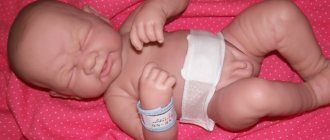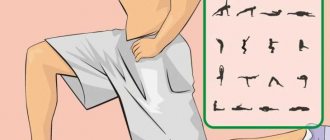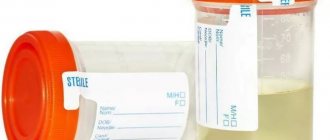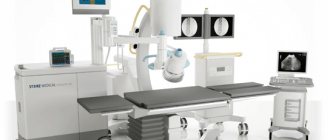What is a cystostomy and why is it needed?
A cystotome is a type of bladder catheter that removes urine from the bladder. But unlike a urethral catheter, an epicystostomy is placed in a hole that the surgeon creates in the suprapubic region, creating a through hole in the tissue to the bladder cavity. Both temporary and permanent stomas can be placed.
The installation of this device is necessary in cases where it is not possible to install a traditional catheter due to injuries or pathologies of the urethra and bladder neck, perineum or genitals, or problems with the prostate in men. In this case, a cystostomy is placed temporarily until problems with independent urination are eliminated.
A permanent cystostomy is performed in cases of severe illnesses and injuries, when irreversible changes have occurred in the area of the urethra and genitourinary tract. But no matter what type of cystostomy is installed, the patient and his family need to know how to care for a cystostomy at home: a step-by-step guide helps a person avoid complications.
Contraindications
Among all the contraindications to bladder training, it is worth noting the absolute ones, when you can’t do it at all, and the relative ones, when the training time will be delayed. Among the absolute ones it is worth highlighting:
- identified fistulas in the perineum, urethra, between the bladder and the rectum;
- inflammatory process in the urinary system;
- presence of blood or blood clots in the urine.
Among the relative contraindications to training are:
- the presence of complete atony of the walls in the bladder area;
- stone formation with the presence of stones in the bladder;
- reflux of urine from the bladder into the ureters.
If certain symptoms occur during bladder training, you should immediately consult a doctor. The reason for the visit should be:
- lower abdominal pain;
- reduction in urine volume compared to previous periods;
- change in urine color, odor, sediment, blood;
- clogging of the catheter and the impossibility of washing or replacing it.
Features of cystostomy care
The cystostomy works continuously. Urine that enters the bladder, without accumulating in large volumes, immediately enters the tube and hose and is discharged into a urinal, which is located outside the body. It is sealed, which prevents urine from getting on clothes and objects. But for drainage to be effective, the urinal must be located below the border of the bladder.
Caring for a cystostomy includes regular washing of the drainage tube and performing all necessary hygiene procedures. The first question that arises in patients is how often the urinal bag needs to be changed. This largely depends on the volume of the container. If it is a volume of 1500 ml, it is emptied approximately once every 8 hours, a container with a volume of 500 to 1000 ml - once every 4 hours. You can remove urine yourself using a special valve located at the bottom of the urinal.
When caring for an epicystostomy, you need to know some rules:
- it is important to control the flow of urine through the catheter;
- check the integrity of the drainage system, avoiding kinks and blockages;
- if there are leaks, immediately determine the source of the leak;
- if it is not possible to replace the catheter yourself, consult a doctor;
- treat the skin around the drainage hole with antiseptics daily;
- monitor the location of the urine collection container;
- When swimming, use only the shower.
In addition, it is necessary to block the outflow of urine through the catheter for 15-20 minutes every day so that the bladder muscles do not weaken and are constantly trained, and the walls do not wrinkle. Equally important is adequate drinking and nutrition to maintain a constant flow of urine from the kidneys.
The cystotome is replaced every 7 days; urinals need to be changed even more often - once every 24-48 hours. If you have any questions, you should consult a doctor: the doctor will clarify how to wash and treat the skin and catheter, as well as how to protect against infection and how to bathe a person if this is a bedridden patient.
Basic principles of management of patients with cystostomies
| Armen Maisovich Galstyan Urologist of the surgical department of the Medical Clinical Center "Health" [email protected] |
Patients with benign prostatic hyperplasia (BPH), according to the literature, occupy a significant place in urological practice and make up more than 50% of patients in urological clinics.
In 30,944.5% of cases, BPH is complicated by acute urinary retention (AUR), which requires catheterization of the bladder and the prescription of various drugs from the group of α-blockers. Unjustified delay in the tactics of conservative management of patients with BPH is associated with such dangerous complications as the development of vesicoureteral reflux, infectious and inflammatory changes in the upper and lower urinary tract and the occurrence of chronic renal failure.
In various regions of Russia, cystostomy for AUR is prescribed in 22.2-47.3% of cases.
Cystostomy is performed:
- patients with BPH and prostate cancer (PCa);
- patients with injuries of the lower urinary tract;
- at the 1st stage of urine diversion followed by various reconstructive plastic surgeries;
- with severe neurogenic dysfunctions of the bladder.
Pathogenesis of changes in the bladder during cystostomy
The main generally accepted method of managing patients with cystostomies is passive evacuation of urine using various drainage systems with regular changes of the drainage tube and rinsing the bladder cavity with antiseptic solutions. However, it has already been proven that washing the bladder cavity to prevent stone formation and salt encrustation of the drainage is ineffective.
Moreover, washing the bladder cavity is dangerous, as it contributes to the occurrence of vesicoureteral reflux, dissemination of infection into the upper urinary tract and the development of urosepsis.
Using the work of some authors as an example (A.Yu. Albitskaya, 2008), it has already been proven that passive urine diversion during cystostomy eventually leads to disruption of the detrusor, which is the main functional mechanism of the bladder. In this case, the latter loses the ability to both accumulate and evacuate urine. In addition, trophic processes in the bladder, blood supply, and innervation are disrupted, which ultimately leads to the progression of inflammatory changes, sclerosis and shrinkage of the bladder.
The development of sclerotic changes in the bladder, in turn, causes a disruption of anatomical relationships
elements of Lieto's triangle, which is manifested by the possible development of vesicoureteral reflux, or retention changes in the upper urinary tract. It has been proven that passive drainage of the bladder can lead to the development of severe morphofunctional changes, among which the main ones are: a decrease in the area of detrusor muscle tissue in relation to connective tissue; a decrease in the number of arterioles and venules in the mucous membrane, as well as epithelial cells, which is confirmed by a biopsy of the bladder.
These changes ultimately lead to the development of a chronic recurrent inflammatory process in the upper urinary tract, chronic renal failure, and periodic attacks of pyelonephritis. The above changes significantly complicate the course of the interoperative period in patients with cystostomies, creating a vicious circle of changes, the result of which, as a rule, is the patient's disability.
Thus, it is not the drainage itself, but the common method of managing patients with long-term functioning cystostomy that leads to loss of the reservoir function of the bladder, progressive sclerosis with the possible formation of microcystis in the patient. It is not surprising that at present there is an urgent need to find the optimal regimen and methodology for managing this category of patients.
Principles of management of patients with cystostomies at the present stage
- Use of modern low-traumatic catheters. Previously, Pezzer catheters were used. However, given their disadvantages (destruction by salts deposited on it, the formation of stones, the likelihood of the catheter head tearing off when changing it, etc.), the use of this type of catheter is currently limited. They were replaced by a Foley catheter, held in the bladder by an inflatable balloon. Its only drawback (in the patient’s opinion) is more frequent changes, i.e. every 10-14 days. Advantages of use: ease of installation and fixation of the catheter.
- Minimizing complications associated with passive urinary diversion by intermittent evacuation of urine from the bladder. The main complications of cystostomy installed against the background of acute and chronic urinary retention in patients with adenoma and prostate cancer are (data from A.Yu. Albitskaya, 2008):
| Complications | Number of cases | % |
| Acute cystitis | 34 | 10,4 |
| Acute urethritis | 4 | 1,3 |
| Acute prostatitis | 23 | 7 |
| Acute pyelonephritis | 16 | 5 |
| Bladder atony | 64 | 19,6 |
| Vesicoureteral reflux | 107 | 32,7 |
| Ureterohydronephrosis | 23 | 6,7 |
| Chronic renal failure | 30 | 9,2 |
| Bladder diverticula | 35 | 10,7 |
Most of these complications are associated with the technique of passive urine diversion against the background of cystostomy, which leads to the launch of a number of pathogenesis mechanisms that cause disruption of the coordinated activity of bladder structures and secondary dysfunction of all organs of the urinary system.
As an alternative to continuous passive urinary diversion, patients should be offered intermittent urinary evacuation from the bladder. This technique is easy to use and can be widely used both in a urological hospital setting and on an outpatient basis by the patient himself under the supervision of a physician.
- In our opinion, patients with cystostomies need to perform “training” of the bladder as early as possible, which would allow maintaining the functioning volume of the organ and, undoubtedly, would be an important predictor of the outcome of the upcoming operation.
For this purpose, if the patient has an epicystostomy, “training” of the bladder should begin on the 6-7th day, with a trocar cystostomy on the 3rd day. In patients with chronic urinary retention and persistent urge, bladder “training” should begin on days 7-10.
Bladder training includes:
- periodic clamping of cystostomy drainage;
- maintaining normal drinking regime;
- decompressing the drainage and emptying the bladder;
- imitation of the normal act of urination.
During a follow-up examination by a urologist, the patient is required to determine the volume of urine excreted and the volume of residual urine using ultrasound.
- Urodynamic monitoring in the process of managing patients with cystostomies is mandatory, as it will allow measuring the cystometric capacity of the bladder, promptly identifying violations of the functional capacity of the bladder, and correcting them.
- To assess the morphological changes in the bladder wall during long-term cystostomy, it is necessary to perform an intraoperative biopsy. Against this background, it is very important to carry out the entire range of conservative treatment methods, including anti-inflammatory, antibacterial therapy, as well as various methods of efferent therapy.
- Constant ultrasound monitoring of the condition of the upper urinary tract of patients, monitoring of laboratory parameters of nitrogen metabolism, monitoring of infectious and inflammatory changes in the urinary tract and timely correction of these disorders are required.
Compliance with the rules listed in this article will certainly save patients from most complications during the treatment process and thereby maintain an acceptable quality of life for this category of patients.
0
Your rating: No
Necessary tools and care products
If the patient or his relatives independently care for the cystostomy, they need a first aid kit and some instruments, solutions and consumables. These include:
- sterile cystostomies (catheters) so that worn or damaged ones can be quickly replaced;
- new urinals (sterile, in undamaged packaging);
- several sets of medical gloves (sterile, in packaging);
- a roll of adhesive plaster;
- a set of antiseptic wipes;
- disinfectant solutions selected by a doctor;
- Janet syringe for rinsing;
- saline solution to remove salt deposits.
Caring for a cystostomy
A cystostomy is the same catheterization of the bladder, the only difference is that the drainage tube is inserted through the abdominal wall and requires constant treatment of the affected area with antiseptic drugs, which is why caring for a cystostomy
is so necessary. The drainage tube can be installed both for a long time and for a short period, so patients are taught to care for it independently.
Cystostomy is intended to normalize the outflow of fluid from the bladder, and is indicated for patients who, due to diseases of the urinary system, cannot urinate in an organized manner. Of course, the patient has to experience terrible discomfort, but in most cases only a cystostomy saves the patient from death due to bladder injuries of various types. If you do not follow the rules for caring for your drainage tube, life-threatening complications may develop.
How is a cystostomy cared for?
The action of the drainage tube is aimed at disinfecting and cleansing the bladder. Along with the installation of a cystostomy, the patient is prescribed diuretics in order to restore the functioning of the damaged organ as quickly as possible.
After installing a urinary catheter through the abdominal wall, it is necessary to regularly perform the following steps to organize proper treatment:
- wash the skin around the hollow tube with furatsilin or potassium permanganate and apply medicinal ointments to the dried area;
- rinse the bladder through the catheter using a syringe with anti-inflammatory medicinal solutions until clean water forms in the bag;
- treat wounds with an antiseptic before installing a new drainage;
- carefully monitor the position of the catheter;
- do not take baths or visit the pool;
- remove liquid from the urine bag so that it does not fill the bag to the limit.
According to doctors' indications, patients can stop the catheter for several hours during the day and disconnect the urinal bag from the tube. This daily procedure contributes to a speedy recovery of the patient, because in the process it stimulates the muscles of the bladder and prevents its deformation.
Why is a cystostomy installed?
In rare cases, cystostomy is indicated for non-surgical diseases, mainly physical damage to the urinary organs, as well as postoperative therapy.
Cystostomy is prescribed in the following cases:
- severe urinary retention;
- injuries to the urethra or bladder;
- operations involving the urethra;
- benign prostate tumors;
- spinal cord pathology.
The cystostomy is installed into the bladder through the abdominal wall, making a 2-3 cm long incision in its area using painkillers. Often this procedure is performed after surgery on the urethra, prostate gland or bladder.
Complications due to lack of cystostomy care
If proper care has not been provided for the cystostomy
, then in most cases complications develop. In addition to poor health regarding defective urinary function, the patient may develop dangerous diseases due to improper use of the cystostomy. These include allergic reactions to the drainage tube, bleeding and suppuration of a wound on the abdominal wall, intestinal pathologies or inflammation of the bladder. Any of the complications can cause death due to the patient’s weak immunity and visible disruptions in the body.
To avoid unpleasant consequences due to the installation of a cystostomy and quickly restore the urinary system after severe organ damage, follow the rules for caring for the drainage tube.
This article does not constitute medical advice and should not serve as a substitute for consultation with a physician.
Source
Trocar cystostomy: patient care after surgery
Like any operation performed under general anesthesia, trocar cystostomy entails a number of unpleasant manifestations for the patient. This is, first of all, a painful recovery from anesthesia, a failure in the life-supporting functions of the body, a long process of wound healing and recovery.
In the case of trocar cystostomy, a person has another additional difficulty - accepting and getting used to the new reality. The patient needs not only to learn how to care for a cystoma, but also to accept that his body will now work in a new way.
Therefore, when caring for a patient in the postoperative period, delicacy, kindness and patience are necessary. Patients may exhibit different behavioral reactions. Sometimes anger and despair arise. In such cases, one must not show intolerance, irritation or detachment. On the contrary, the patient should be treated with understanding and maximum care, and supported.
It is better if the responsibilities for caring for the patient are carried out not by close people, but by a qualified patronage worker. Because the patient may experience shame and embarrassment in front of a loved one, which aggravates his suffering.
Preparation for processing
It is necessary to treat the cystostomy daily in the morning and evening.
Before carrying out the hygienic procedure, it is necessary to prepare the patient. The patient is placed on his back in a horizontal position. Oilcloth is placed under the buttocks and a vessel is placed. Before handling, you must wash your hands thoroughly with soap and running water. Hands and forearms are soaped, the soap is washed off with running water. Hands are thoroughly dried and sterile gloves are put on. A Janet syringe, sterile dressing material, antiseptic solutions, containers for waste materials, and clamps are prepared.
The qualified staff of our clinic will take care of the cystostomy and give the necessary recommendations for carrying out the necessary procedures. For non-transportable patients, our clinic provides a home call to a urologist.
Washing procedure
If the patient is lying down, an oilcloth is placed under his buttocks and a bedpan is placed. Then it is necessary to thoroughly clean the skin in the area of the external genitalia and suprapubic fistula.
- In order to wash the inside of the catheter, you first need to clean your hands and wear sterile gloves.
- An aqueous solution of furatsilin or a solution of boric acid 3% is drawn into a Janet syringe.
- The catheter must be disconnected from the urinal bag and the syringe cannula inserted into the hole. No more than 40 ml of antiseptic solution is administered at a time.
- Next, the syringe is disconnected from the catheter and its end is lowered into the container.
- The procedure is repeated until clean, clear water begins to flow through the catheter.
After rinsing the cystostomy is completed, it is necessary to wash with an antiseptic solution and dry the skin around the fistula using a sterile dressing.
It is possible to carry out the procedure in compliance with all antiseptic rules by seeking help from the urologists of our clinic or by calling specialists to your home.
Common symptoms and manipulations in urology:
- Pain when urinating
- Discharge from the urethra
- Itching in the urethra
- Short frenulum of the foreskin
- Prostate massage
- Prevention of casual sex
- Frenum plastic surgery
- Circumcision
- Kidney pain
- Perineal pain
- Stones in the kidneys
- Pus in urine
- Catheter removal at home
- Bougienage of the urethra
- Urinary retention
- Urological examination
- Papillomas on the foreskin
- erectile disfunction
- Make an appointment with a urologist
External treatment of cystostomy
Treatment of cystostomy includes hygienic procedures for the outer skin and fistula opening.
- The skin around the wound is washed with a cotton ball with warm water and soap, then cleaned and dried with a sterile cloth. Then it is necessary to treat the skin around the fistula opening with an antiseptic solution.
- The part of the catheter that protrudes from the wound should also be treated. This must be done using a cotton ball soaked in alcohol. A rubber tube is processed at a distance of 10 centimeters from the wound exit.
- Next, zinc paste is applied to the skin to protect the skin from maceration.
- A sterile gauze pad is placed on top of the wound and secured with an adhesive bandage.
If signs of inflammation appear, discharge from the wound, you must immediately seek help from specialists or arrange a doctor's home call. Our clinic specialists will perform a thorough examination, prescribe the necessary treatment and give recommendations for caring for the cystostomy.
Cystostomy removal technique
Technically, removal of a cystostomy is a sequence of several medical procedures.
- First of all, the suprapubic fistula is assessed for signs of inflammation. The skin around the outlet is treated with an alcohol solution of antiseptics. If necessary, the hair around the cystostomy site is removed.
- The urine collection reservoir is disconnected from the catheter. The catheter itself is closed using a special plastic valve or clamp that prevents urine from flowing through the tube.
- If the catheter is equipped with a special holding cartridge of liquid, a disposable syringe is attached to the inlet valve of the cartridge and the liquid is removed.
- Next, the catheter is carefully removed from the bladder cavity.
After removal, the skin is debrided and the hole is covered with a sterile bandage. The hole can heal on its own, or can be sutured in a surgical hospital.
Common symptoms and manipulations in urology:
- Pain when urinating
- Discharge from the urethra
- Itching in the urethra
- Short frenulum of the foreskin
- Prostate massage
- Prevention of casual sex
- Frenum plastic surgery
- Circumcision
- Kidney pain
- Perineal pain
- Stones in the kidneys
- Pus in urine
- Catheter removal at home
- Bougienage of the urethra
- Urinary retention
- Urological examination
- Papillomas on the foreskin
- erectile disfunction
- Make an appointment with a urologist










